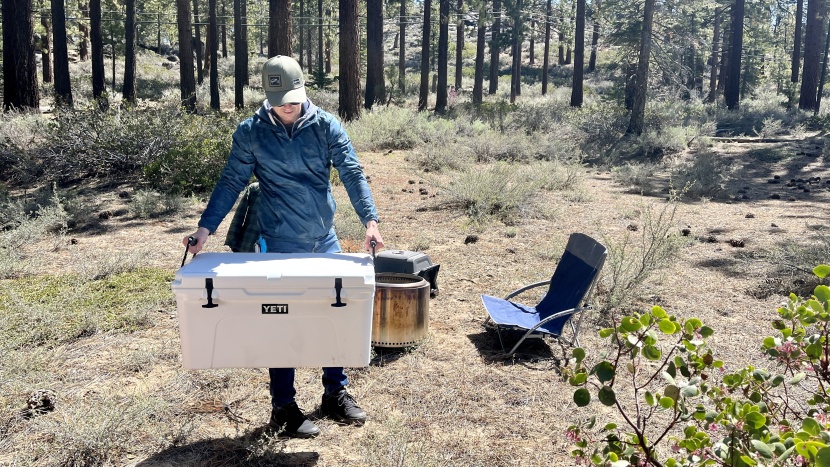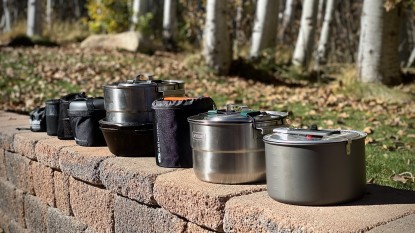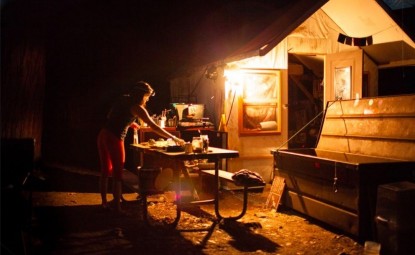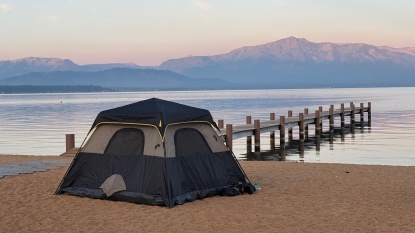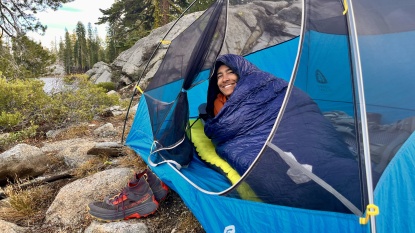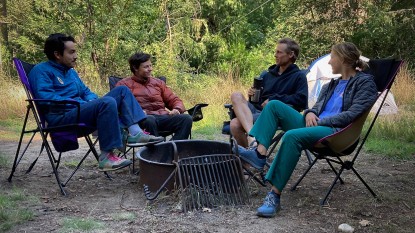Buying a cooler used to be so easy — you went to the store, pulled one of many simple, identical products off the shelf, and paid for it. Things got a bit more interesting a few years back with the advent of fancy-looking, expensive products making fantastic claims about the longevity of your ice. Since then, the world of iceboxes has become flooded with what feels like zillions of options, all claiming to be the “best” one you'll ever own at the “low cost” of several hundred dollars. Figuring out which product will fit best into your lifestyle and budget is a daunting task. We've researched and tested scores of contenders over the years to discover which ones perform best. Beyond just performance, many other factors go into choosing the right model. Here we walk through essential elements in the decision-making process to help you identify the right cooler for you.
What Kind of Cooler Do You Need?
There are several different styles out there, and each has its merits and specialties. As you read through the next section, keep in mind your goals with a cooler.
Soft Coolers
Hard Coolers
Electric Coolers
Keeping Food Safe
If you're after a hard-walled cooler, it's time to think about which one will work best for you. First, consider what kinds of items you'd like to keep cold. If you answer with any raw meat or food you'd usually keep in the fridge at home (like eggs, bacon, sandwich meat, mayonnaise or other condiments, cheese, milk, etc.), then keeping your food cooled appropriately is exceptionally important. After all, there's a reason you keep those things in the fridge at home rather than in the pantry. The USDA recommends maintaining these types of food at or below 40º Fahrenheit to ensure both their freshness and their lack of harmful levels of bad bacteria. Our testing prioritizes insulation value over every other possible metric to help you quickly see which models are up to the task of keeping your food fresh.
But bringing delicious meals with you isn't the only use you may have in mind. It can be just as essential to keep your guests (and yourself!) adequately hydrated with a delightful selection of tasty beverages. While mainstream media would have us all believe that beers are best “icy cold,” anyone who enjoys a good craft beer knows that not all beer is meant to be that cold. So what's the best temperature to keep beer at for optimal refreshment? It depends on the type of beer, but according to the American Homebrewers Association, most beers taste pretty good around 50º F. For those of you doing the math, that means better beers are at temperatures warmer than the safe food temperature, which is great news if you're depending on melting ice to keep all your friends refreshed during a hot summer rafting trip. We kept this in mind during our testing process to ensure those beers stay on the right side of the thermometer.
There are several factors that influence a chest's ability to not only keep your ice frozen for longer but also to help it last through all the jam-packed car adventures, rambunctious kids, jarring boat ventures, and even hungry wildlife encounters. The insulating capacity, durability, and longevity of any product are a function of their construction. So how are they made?
Cooler Construction
While you can still purchase simple polystyrene foam versions (like an oversized coffee cup), most traditional models are made from two pieces of plastic sandwiching a layer of thick hard foam. Depending on the thickness of the plastic and foam, and the quality of the seal connecting those pieces, different levels of insulation are achieved. More recent models are rotationally molded (rotomolded) instead. This process entails applying a heat-softened plastic over the top of the hard foam interior, creating a single piece of plastic makes up the body and lid. This manufacturing process helps increase the insulation prowess, as there is no seal between layers of interior and exterior plastic - they are all the same layer, which traps cold inside and heat outside. Another way that newer models help extend the life of your ice is by the addition of a rubber gasket around the edge of the lid, much like the rubber gasket used to seal your refrigerator at home. Rotomolded products with a high-quality gasket seal are some of the best insulators on the market and also some of the most durable. If you're after a product that's going to keep ice the longest and last through the worst conditions, you're after a rotomolded style.
Bear Resistant
You've probably seen them — the YouTube videos showing a big grizzly bear trying to break into an ice chest and failing, the claims of various manufacturers that their products are “IGBC certified.” The Interagency Grizzly Bear Committee (IGBC) is an interagency committee with high-level executives across state and federal agencies serving to recover and regulate grizzly bear populations and provide information, education, and regulations for the public in and around grizzly bear territories. They have compiled a comprehensive list of food storage regulations when in grizzly bear habitat, which typically includes the use of bear-resistant food storage, such as campground bear boxes, and an approved list of certified products. To get that list of certified products, the IGBC tests food storage receptacles submitted to them to see if they meet the “minimum standards related to the effort that must be expended by grizzly bears to access the container's contents.” These standards are established by consulting with bear biologists and human-bear conflict specialists. Sounds pretty good, right? Not so fast.
While an IGBC certified product is undoubtedly more bear-resistant than a non-certified product, it's not bearPROOF. The IGBC makes this abundantly clear in their guidelines for product certification and usage, and they go on to say that this certification doesn't even guarantee the contents of that container will never leak or spill out. The IGBC only claims that “this bear-resistant products testing program intends to approve products that minimize easy and direct access to attractants by grizzly bears.” Additionally, many models that have made it onto the IGBC certification list require special locks to meet those certification requirements.
The IGBC certification certainly goes a long way toward keeping your food safe from grizzlies and other creatures that may be on the hunt for an easy meal (we're lookin' at you, squirrels!). These products are designed to minimize the smell that attracts such animals to your campsite in the first place and are the first line of defense against an unwanted assault if wildlife does find it. That's more than you can say for products without an IGBC certification. Certified models are safer than storing food in your car (which grizzlies can easily break into) when used correctly and at the very least, are solidly built. If you're specifically looking to use your new coolbox in an environment shared with bears, we strongly recommend taking additional precautions to safeguard your food, and knowing all the local regulations before you head out there. If there are no bears in your neck of the woods, you can rest assured knowing that an IGBC certification means a pretty darn durable icebox.
Usability
A product that insulates well is absolutely crucial for longer trips and keeping food safe for consumption while you're out. And there are plenty of other factors that can make using any model either a wonderful experience or a frustrating endeavor. We made sure to check out how enjoyable it was to use every product.
Ease of Use
Every cooler is made to hold things that you'll eventually want to retrieve — so it's important to be able to get into it whenever you'd like easily. At the same time, no one wants one that's too easy to open and rattles loose as you drive down a gravel road. The way a latch works makes a difference in these scenarios. Some models have hard plastic latches that can be pressed, pulled, or squeezed to operate. These plastic closures tend to be fairly straightforward to use and can be operated by just about anyone. With no two-ways about them, they also typically don't require a lot of muscle power or finagling to get them to function. Other products have rubber latches that are stretched down to close or open the lid. These frequently require more strength or two hands to operate but are less likely to wiggle free when jostled. And of course, the simplest styles have no latches at all and push closed and pull open. While being the easiest to operate, these tend not to seal completely, reducing their insulation abilities and making it rather easy to leave cracked open on a hot day.
And, of course, the end of every great adventure includes cleaning your cooler (or at the very least, emptying it). This process can be facilitated or hampered by the lid and drain design. Some lids stay open while you unload your leftover contents, while others tend to snap closed on your hand — ouch.
While you may think that having a drain is just a checkmark for your ice chest, it's so much more than that. Having the right drain and drain plug can make cleanup more efficient. Some products have a dual drain: one smaller hole in the drain plug that can empty all your melted ice, with a much larger hole in the side that makes the process much faster. Others accomplish this same effect by having two separate drains, one on each end. Many have just small drainage holes, thereby increasing the amount of time you wait for that stale water to seep out slowly. And some smaller models have no drain plug at all.
Drain placement matters a lot as well. Many have the drain elevated half an inch or more from the floor of the box, which leaves an unfortunate puddle at the bottom of your box. A drain plug tether can be a lifesaver — after all, if you lose that plug, you're left with a cooler that's not good for much anymore (although replacement plugs are sold by most manufacturers). It's also important to consider how well the plug seals. Leakage is never welcome, even less so on the leather seats of your car or the new carpet in your living room. After all, we are trying to prevent messes and make cleanup as streamlined as possible.
Portability
Another important factor in your cooler's usability is how easy it is to get it to the party, especially when loaded with a ton of ice, drinks, and food. Most of the robust, rotomolded models are fairly heavy even when they're empty, so stuffing a 60+ liter chest to the brim is likely going to make moving it a two-person job. Unless, of course, it has wheels! A new wave of products with excellent wheels has come onto the scene lately. While some models have similar tiny wheels like a roll-on suitcase that are more of a hindrance than a help, others come with large, beefy wheels that can be inflated just like your bicycle or car tires. With enough clearance, a handful of these contenders are practically a breeze to cart with you anywhere - across rocky roads, through soft sand, and over green grass. The right set of wheels can open up a whole new world of possibilities.
However, there's only so much wheels can do. At some point you're going to have to pick up your cooler to load it in the car, bring it down the stairs into the yard, etc. Many fantastic products don't have wheels but require the use of their handles to move them around. This aspect is frequently overlooked when making a purchase decision but is the first thing you'll notice when you try to move a fully loaded chest from the kitchen to the back of the family SUV. Many models have handles molded into the design. Some of these stick out from the sides for easy grabbing but make the overall shape a bit awkward to Tetris into your weekend getaway vehicle.
A growing number of products on the market have indented handles on each side that are easy to grab and use without changing the overall shape of the box. A lot of these also feature additional handles that are best during a two-person carry. Typically this extra set of handles is made up of rope with a grip attached in the middle. Some of the more traditional-styled coolers instead come with hard plastic handles that swing up from the sides and offer very little in the way of comfort for your hands. Smaller models frequently feature the over-the-top handle for a balanced, single-hand carry of your favorite little ice chest.
Features
Beyond the basics of finding a functional model, there can be several features that may be just the right fit for your life. A lot of models come with or are customizable with a myriad of different features. Anglers may appreciate an included pole mount of measuring tool along the lid, thirsty folks might be interested in models with cupholders, and partiers will likely love a bottle opener affixed right on the side. The addition of an interior basket or bin to keep certain foods dry, produce off the ice, or small items easily accessible is an excellent feature. Our drink-mixing testers also appreciate this feature to keep a portion of the ice clean for iced beverages. Some manufacturers go all out with things like a cutting board, an additional dry storage bin that attaches right to the lid, and even a bicycle mount for a wheeled chest. If you like minimizing the number of things you have to bring while maximizing the number of things you can do, there's probably a product out there with all the features you desire.
How to Maximize Insulation Efficiency
During our testing, we used these contenders in a way that we feel is average for any given scenario — we filled them half and half with room temperature and cold drinks, we used the amount of ice that came in a standard bag, and we left them in hot places. But regardless of what model you ultimately land on, there are several things you can do to optimize its performance.
- Pre-chill: Pre-chill the entire thing. While we doubt most people have a walk-in fridge that they can leave a large chest in for a day or so, even placing it in a chilly garage or air conditioning the night before you plan to pack it will help. If that isn't feasible, consider purchasing a “sacrificial” bag of ice to cool the chest before you use it — and then be sure to dump all that melted ice water before you load your chest for real.
- Pre-chill your contents: Everything that goes in the box should spend several hours (preferably overnight) in your fridge beforehand. If you're planning on a more extended trip, consider freezing certain items that you won't be using until later (like those Day 4 hamburgers), or things that can be easily utilized frozen (like shredded cheese).
- Consider ice replacements: Many rotomolded models can take dry ice, which is much colder and lasts much longer than regular ice. If yours isn't rated for dry ice (and do check, as many are not) or you can't get ahold of any, try using reusable freezer packs. They also tend to stay colder longer, take up less space than traditional ice, and even create less of a mess when they do melt. If that still sounds like too much, try using ice blocks. With less surface area to melt, these will last significantly longer than ice cubes. One or two of these in the center of the box with regular ice cubes piled around everything else will help your food stay colder longer.
- Pack a 2:1 ice to food ratio: Fill the chest ⅔ full with ice to make it last, especially if you're using regular ice cubes. You can use a less extreme ratio with some of those ice replacements — another reason to invest in those freezer packs or to hunt down dry ice.
- Keep it in the shade: This one sounds obvious, but it is easy to forget as the sun changes where shade is throughout the day. It's also important to consider the temperature of the surface on which you're setting your cooler, as it will radiate into the bottom of your icebox and prematurely melt its contents. Hot sand and asphalt are best to avoid, though cool cement or grass can help. Many coolers now have lifted feet to keep the bottom off the ground. Nevertheless, it's still helpful to keep it in the shade. Remember, inside your oven of a car doesn't count as shade.
- Minimize the time the box is open: This is another one that sounds obvious but can be challenging. Whether it's your buddy searching for that very last bottle or your toddler playing with things while your back is turned, it's easy to leave the lid open. Instead, try to open the lid fewer times and do it when the day is colder. Try pairing your extended camping trip cooler with a smaller personal one that you can load in the more frigid morning air with the items you'll need for a midday lunch and hot afternoon refreshment. Any way you can cut down the time the lid is open will be more time until that last speck of ice disappears.
Conclusion
No matter where you recreate or hang out, a cooler is something that comes in handy for just about everyone. Though there are a vast array of models you could buy, it's our hope that the thorough and repeated testing of dozens of models through the years — along with this buying guide — has helped to narrow your search.









